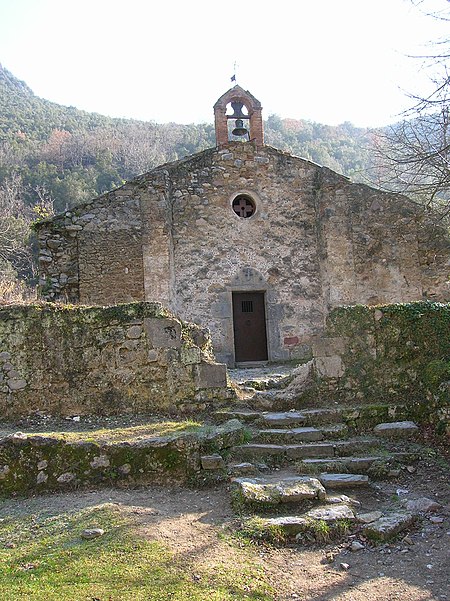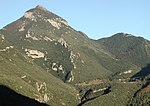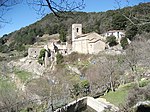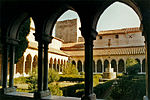Montferrer (French pronunciation: [mɔ̃fɛʁe] ) is a commune in the southern part of the Pyrénées-Orientales department in the Occitanie region of southern France. Its inhabitants are called Montferrerois. Historically and culturally, the commune is in the Vallespir, a former viscounty (incorporated in the Middle Ages into the viscounty of Castelnou), annexed to France by the Treaty of the Pyrenees (1659) and roughly corresponding to the Tech Valley from its source to Céret.
Exposed to a modified oceanic climate, it is drained by the Tech River, the Saint-Laurent River, the Fou River, and two other watercourses. The commune has a remarkable natural heritage: a Natura 2000 site ("le Tech") and a natural area of ecological interest, fauna, and flora.
Montferrer is a rural commune with 197 inhabitants in 2020, after reaching a population peak of 883 inhabitants in 1806. It is part of the Amélie-les-Bains-Palalda attraction area.
The Gorges de la Fou serve as the boundary between the communes of Montferrer and Corsavy. The location is particularly remarkable: over a length of about two kilometers, the gorges reach a depth of 250 meters, sometimes narrowing to not exceed the width of one meter between the two walls. Unfortunately, the gorges are currently off-limits to the public: between 300 and 600 cubic meters of rock have detached from the wall, making the visit to the site dangerous. According to a study, it would take between 18 and 24 million euros to restore the gorges.












